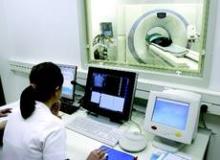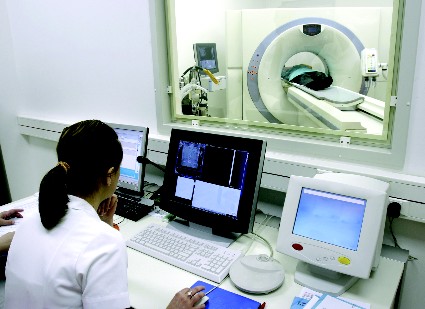User login
Repeat or duplicative medical imaging is frequently cited by politicians as a quick and painless way to cut health care costs. It’s a political no-brainer in many ways, especially when the idea is backed up by estimates from the Institute of Medicine and the Medicare Payment Advisory Commission (MedPAC) that repeat tests waste billions of dollars each year.
But the American College of Radiology (ACR) has released a report that attempts to frame the issue in a different way. The ACR said that while there is plenty of unnecessary testing going on, not all repeat tests fall into that category. The ACR’s in-house research institute, the Harvey L. Neiman Health Policy Institute, has proposed a new classification system to help researchers and policy makers tell the difference between a test that’s medically necessary and one that it is not.
"Instead of maintaining a blanket presumption that repeat tests are a waste of time and resources, we need to more clearly understand what we mean by repeat imaging," Dr. Richard Duszak, the coauthor of the report and the CEO of the Harvey L. Neiman Health Policy Institute, Memphis, said during a press conference.
The seven-page report breaks down repeat tests into the following categories: supplementary imaging, duplicative imaging, follow-up imaging, and unrelated imaging. The categories are designed to help researchers when considering the appropriateness of repeat imaging on the same anatomic site within a test or condition-specific interval of time. The report outlines a series of clinical scenarios.
Here’s an example of medical necessary repeat testing from the "supplementary imaging" category: A physician orders a noncontrast abdominal CT scan to evaluate suspected kidney stones. A rounded low-density structure is identified in the left kidney. This could reflect either a benign simple cyst or a necrotic mass. As a result, a renal ultrasound is performed.
On the other hand, some supplementary tests offer little value, according to the report. Consider a situation in which a physician orders a CT, an ultrasound, and an MRI of the abdomen at the same time for an inpatient with abdominal pain with the hope that at least one of the studies will provide some useful information.
The new classification system will help researchers, in particular, to follow a "clinically meaningful approach" when evaluating some repeat medical testing contributes to health care costs, Dr. Duszak said.
So is medical imaging an area ripe for reform or are policy makers unfairly lumping all repeat imaging together as unnecessary?
Repeat or duplicative medical imaging is frequently cited by politicians as a quick and painless way to cut health care costs. It’s a political no-brainer in many ways, especially when the idea is backed up by estimates from the Institute of Medicine and the Medicare Payment Advisory Commission (MedPAC) that repeat tests waste billions of dollars each year.
But the American College of Radiology (ACR) has released a report that attempts to frame the issue in a different way. The ACR said that while there is plenty of unnecessary testing going on, not all repeat tests fall into that category. The ACR’s in-house research institute, the Harvey L. Neiman Health Policy Institute, has proposed a new classification system to help researchers and policy makers tell the difference between a test that’s medically necessary and one that it is not.
"Instead of maintaining a blanket presumption that repeat tests are a waste of time and resources, we need to more clearly understand what we mean by repeat imaging," Dr. Richard Duszak, the coauthor of the report and the CEO of the Harvey L. Neiman Health Policy Institute, Memphis, said during a press conference.
The seven-page report breaks down repeat tests into the following categories: supplementary imaging, duplicative imaging, follow-up imaging, and unrelated imaging. The categories are designed to help researchers when considering the appropriateness of repeat imaging on the same anatomic site within a test or condition-specific interval of time. The report outlines a series of clinical scenarios.
Here’s an example of medical necessary repeat testing from the "supplementary imaging" category: A physician orders a noncontrast abdominal CT scan to evaluate suspected kidney stones. A rounded low-density structure is identified in the left kidney. This could reflect either a benign simple cyst or a necrotic mass. As a result, a renal ultrasound is performed.
On the other hand, some supplementary tests offer little value, according to the report. Consider a situation in which a physician orders a CT, an ultrasound, and an MRI of the abdomen at the same time for an inpatient with abdominal pain with the hope that at least one of the studies will provide some useful information.
The new classification system will help researchers, in particular, to follow a "clinically meaningful approach" when evaluating some repeat medical testing contributes to health care costs, Dr. Duszak said.
So is medical imaging an area ripe for reform or are policy makers unfairly lumping all repeat imaging together as unnecessary?
Repeat or duplicative medical imaging is frequently cited by politicians as a quick and painless way to cut health care costs. It’s a political no-brainer in many ways, especially when the idea is backed up by estimates from the Institute of Medicine and the Medicare Payment Advisory Commission (MedPAC) that repeat tests waste billions of dollars each year.
But the American College of Radiology (ACR) has released a report that attempts to frame the issue in a different way. The ACR said that while there is plenty of unnecessary testing going on, not all repeat tests fall into that category. The ACR’s in-house research institute, the Harvey L. Neiman Health Policy Institute, has proposed a new classification system to help researchers and policy makers tell the difference between a test that’s medically necessary and one that it is not.
"Instead of maintaining a blanket presumption that repeat tests are a waste of time and resources, we need to more clearly understand what we mean by repeat imaging," Dr. Richard Duszak, the coauthor of the report and the CEO of the Harvey L. Neiman Health Policy Institute, Memphis, said during a press conference.
The seven-page report breaks down repeat tests into the following categories: supplementary imaging, duplicative imaging, follow-up imaging, and unrelated imaging. The categories are designed to help researchers when considering the appropriateness of repeat imaging on the same anatomic site within a test or condition-specific interval of time. The report outlines a series of clinical scenarios.
Here’s an example of medical necessary repeat testing from the "supplementary imaging" category: A physician orders a noncontrast abdominal CT scan to evaluate suspected kidney stones. A rounded low-density structure is identified in the left kidney. This could reflect either a benign simple cyst or a necrotic mass. As a result, a renal ultrasound is performed.
On the other hand, some supplementary tests offer little value, according to the report. Consider a situation in which a physician orders a CT, an ultrasound, and an MRI of the abdomen at the same time for an inpatient with abdominal pain with the hope that at least one of the studies will provide some useful information.
The new classification system will help researchers, in particular, to follow a "clinically meaningful approach" when evaluating some repeat medical testing contributes to health care costs, Dr. Duszak said.
So is medical imaging an area ripe for reform or are policy makers unfairly lumping all repeat imaging together as unnecessary?

